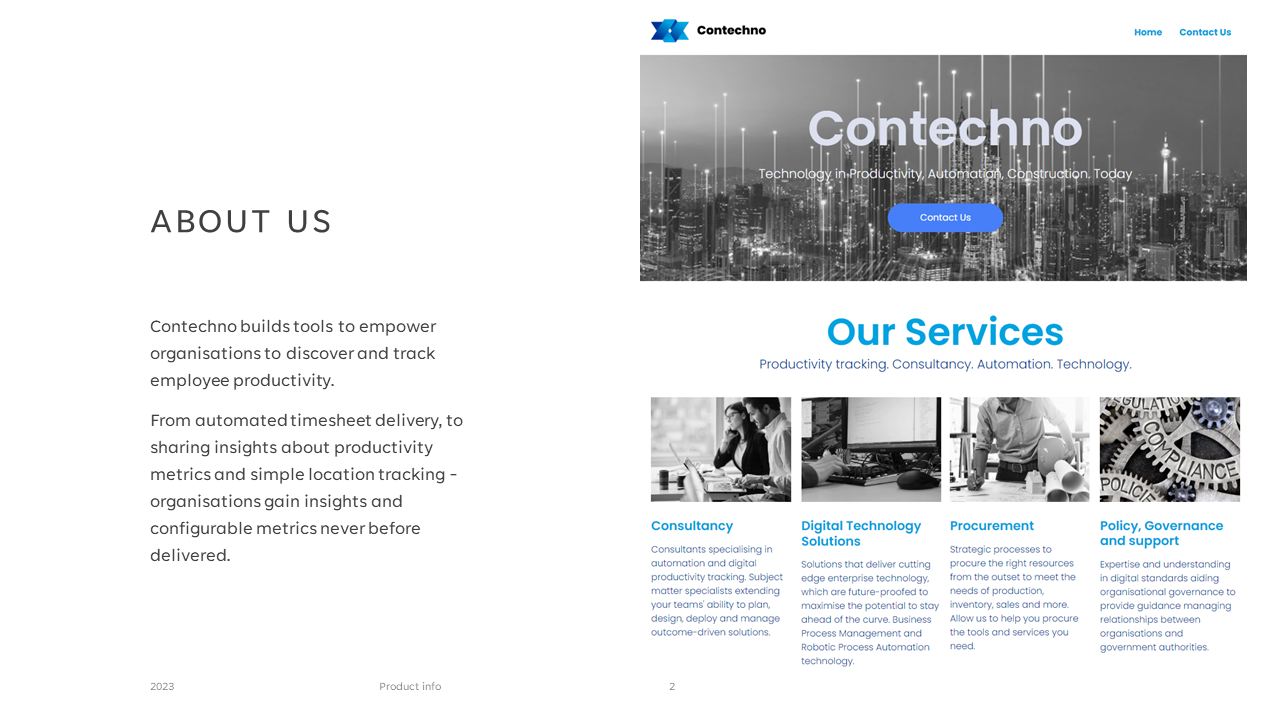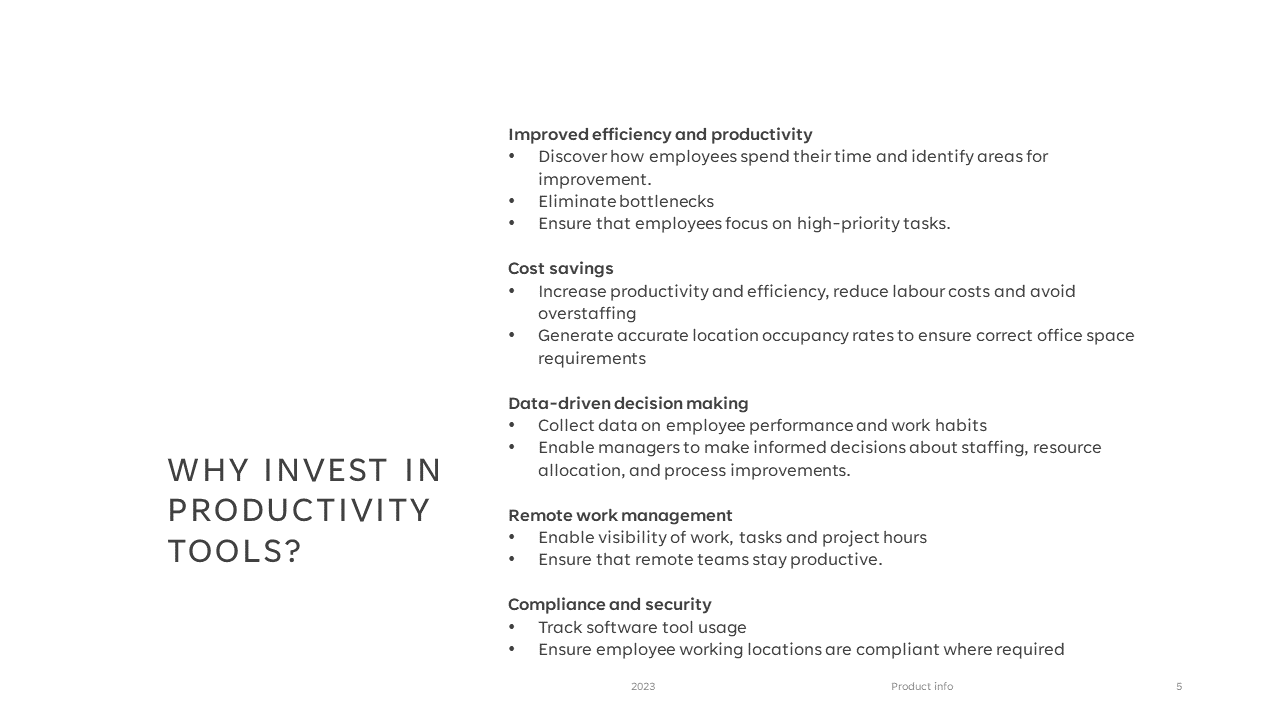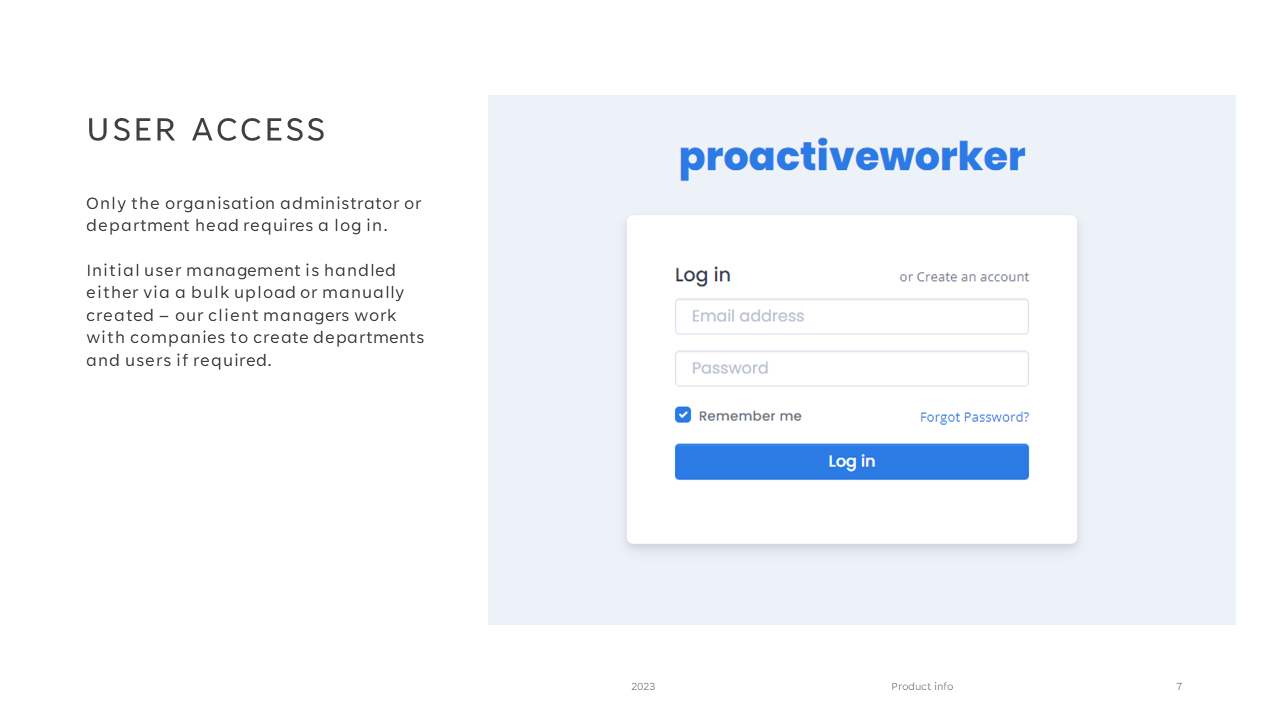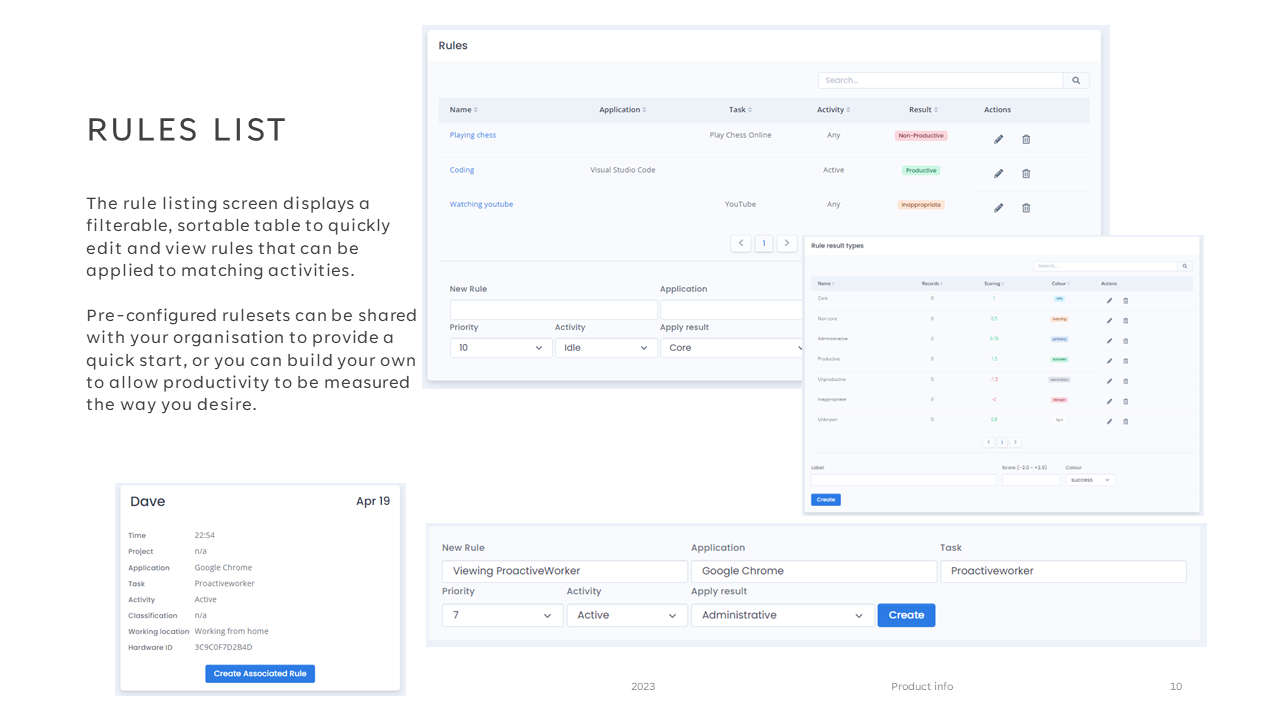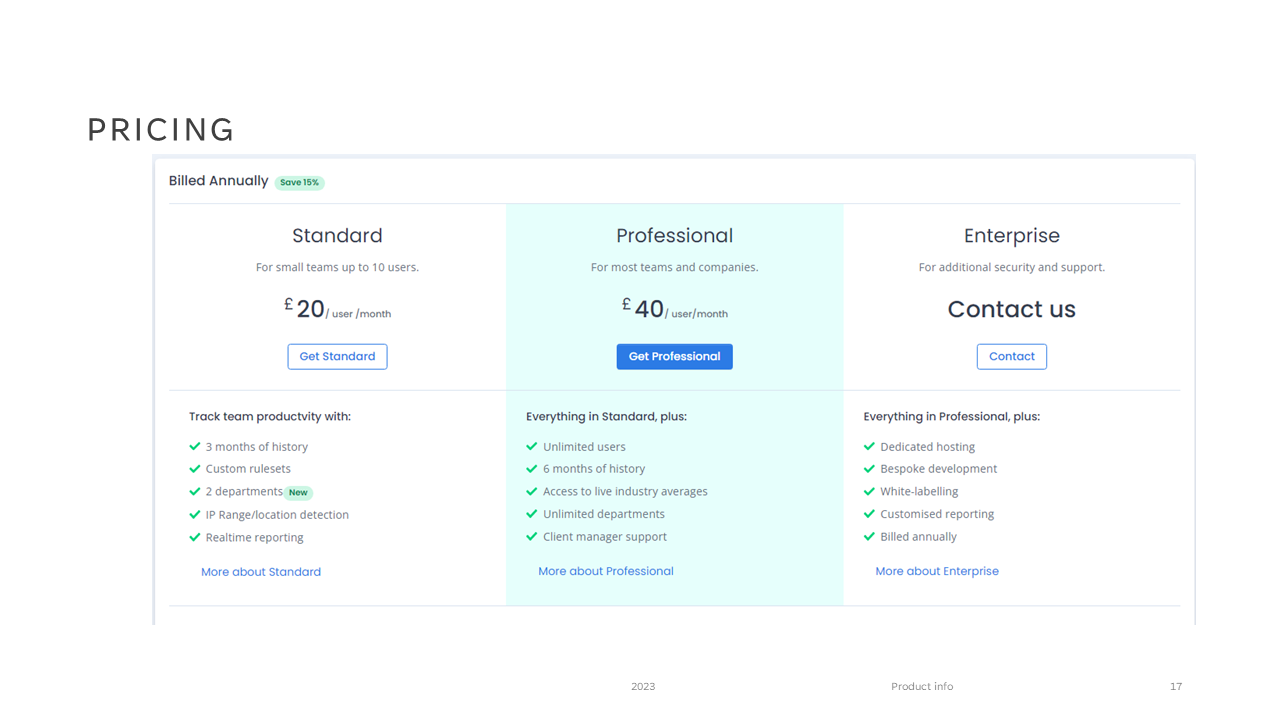Understanding the problem
Knowing the unknowns
Only around 17% of employees can accurately estimate the time they spend on tasks (source: Harvard Business Review)
Tracking the untrackable
It is estimated that employees lose an average of 2.1 hours per day due to distractions and interruptions (source: Basex Research)
Unproductive working
Employees spend an average of 31 hours per month in unproductive work related activities (source: Atlassian)
Addressing concerns
35% of CEOs are concerned about the potential impact of increased regulations and compliance on their organisations with respect to remote working (source: 2020 PwC Global CEO Survey)
Time Tracking
Time theft
According to a study by the American Payroll Association (APA), time theft can account for up to 2.2% of gross payroll costs
Human error
Research from the APA also revealed that human error in manual timekeeping leads to a 1-8% error rate in payroll calculation. This occurs via mistakes in data entry, misreading handwriting and miscalculations
Administrative costs
A study by the Aberdeen Group found that companies using manual time and attendance processes spent 20% more on their payroll administration than companies using automated systems
Manual processes
38% of businesses still use manual methods for time tracking, and managers spent an average of 4 hours per week on time and attendance management (source: Replicon 2017 Time and Attendance survey)
Why Invest in productivity tools?
Improved efficiency and productivity
- Discover how employees spend their time and identify areas for improvement.
- Eliminate bottlenecks
- Ensure that employees focus on high-priority tasks.
Cost savings
- Increase productivity and efficiency, reduce labour costs and avoid overstaffing
- Generate accurate location occupancy rates to ensure correct office space requirements
Data-driven decision making
- Collect data on employee performance and work habits
- Enable managers to make informed decisions about staffing, resource allocation, and process improvements.
Remote work management
- Enable visibility of work, tasks and project hours
- Ensure that remote teams stay productive.
Compliance and security
- Track software tool usage
- Ensure employee working locations are compliant where required
Summary
- Automated time and task tracking for employees
- Location tracking provides employers metrics on office utilisation
- Automated timesheet creation and delivery
- Project tracking
- Customisable rulesets allow productivity metrics to be personalised to the company
- Dedicated client managers who work with your teams to highlight opportunities to improve the working environment
- Obtain industry average productivity metrics for comparison purposes

